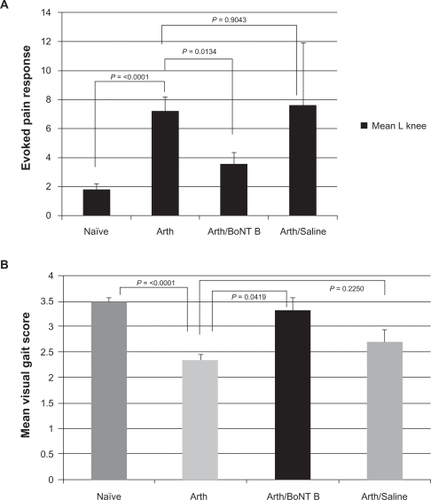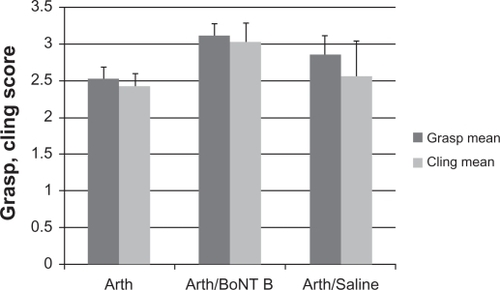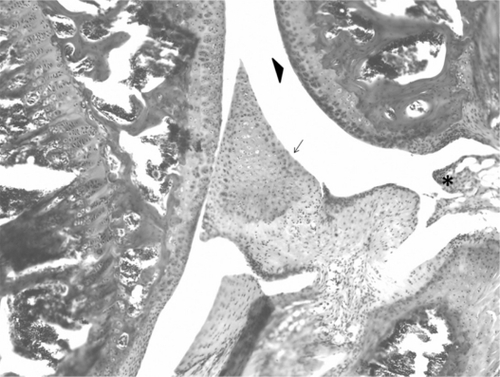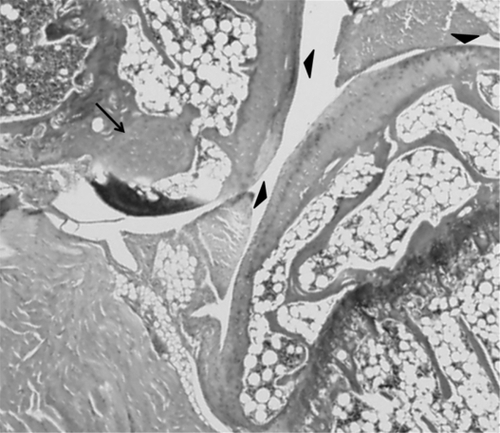Figures & data
Table 1 Gait impairment criteria
Table 2 Grasp impairment criteria
Table 3 Cling impairment criteria
Figures 1 A) Evoked pain response: Measurement of joint tenderness (left knee) and B) Spontaneous pain behavior: Measurement of gait changes.
Abbreviations: naïve, 40 animals prior to induction of arthritis in the left knee; Arthritic, 40 animals four weeks post intra-articular collagenase into the arthritic left knee; Arth/BoNT/B, 17 animals four weeks post intra-articular collagenase into the left knee (arthritic), three days post intra-articular botulinum neurotoxin Type B into the arthritic left knee; Arth/saline, seven animals four weeks post intra-articular collagenase into the left knee (arthritic), three days post intra-articular saline into the arthritic left knee.

Figure 2 Safety assessment: Limb strength.
Abbreviations: arthritic, 40 animals four weeks post intra-articular collagenase into the arthritic left knee; Arth/BoNT B, 17 animals four weeks post intra-articular collagenase into the left knee (arthritic), three days post intra-articular botulinum neurotoxin Type B into the arthritic left knee; Arth/saline, seven animals four weeks post intra-articular collagenase into the left knee (arthritic), three days post intra-articular saline into the arthritic left knee.


